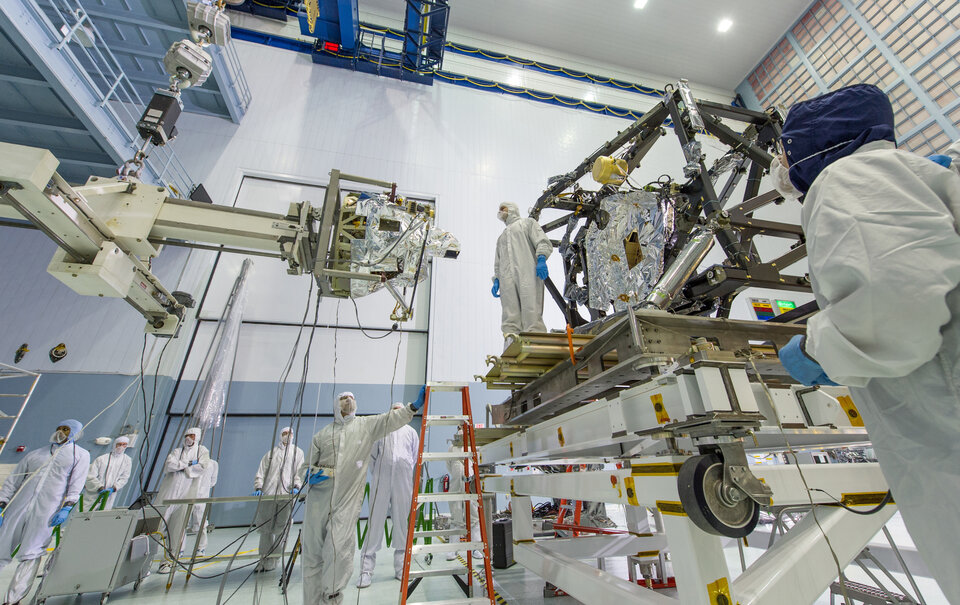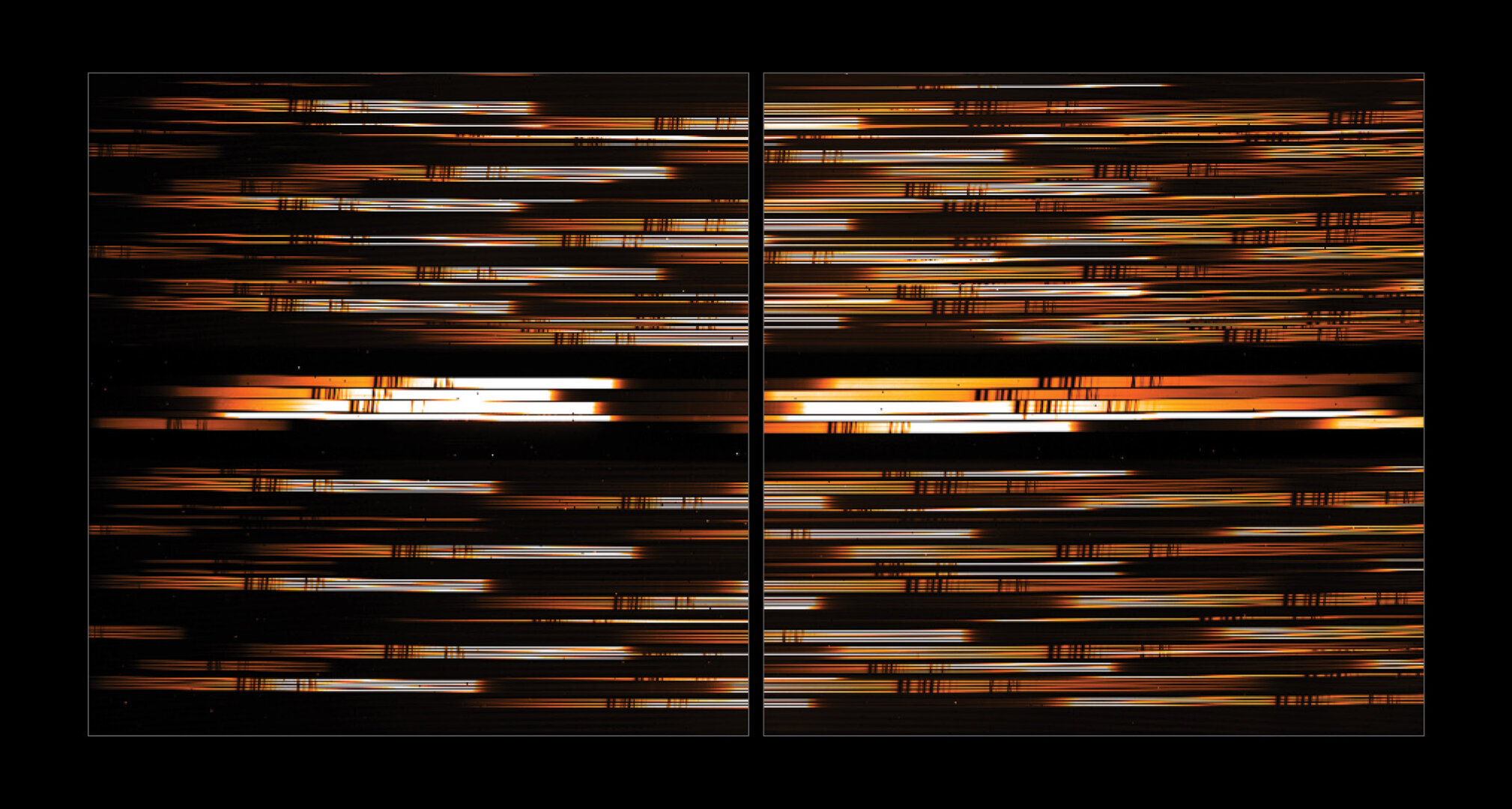Webb’s instruments
Webb has a suite of four instruments, the key to addressing the fundamental science goals of the mission.
NIRSpec – the Near-Infrared Spectrograph
The NIRSpec instrument is the workhorse near-infrared spectrograph on board Webb. The primary goal of NIRSpec is to enable large spectroscopic surveys of astronomical objects like stars or distant galaxies. This is made possible by its powerful Multi-Object Spectroscopy mode, which makes use of use of roughly a quarter of a million tiny configurable shutters, which are each comparable in size to the width of a human hair, to conduct simultaneous spectroscopic observations of multiple sources in a single exposure. In this mode, Webb is able to obtain spectra of up to 200 targets simultaneously, making for very efficient use of Webb’s valuable observing time. NIRSpec also offers integral-field and fixed-slit spectroscopy modes that facilitates detailed studies of individual astronomical objects.
MIRI – the Mid-InfraRed Instrument

MIRI is the only instrument on the telescope capable of operating at mid-infrared wavelengths and supports the whole range of Webb’s science goals, from observing our own Solar System and other planetary systems to the study of the early Universe. MIRI is a versatile instrument offering a wide set of modes: imaging, coronagraphy and different flavours of spectroscopy. To observe the cosmos in the mid-infrared (and in particular to wavelengths up to 28 μm), MIRI must be cooled to a temperature of –266 degrees Celsius, which is more than 30 degrees cooler than the other instruments in the Webb observatory. This is accomplished by the use of an innovative cooling system, known as a cryocooler, which acts as an extra refrigerator for the MIRI instrument.
NIRCam – the Near-Infrared Camera
Webb’s NIRCam is the observatory’s primary camera that simultaneously images the cosmos in two different infrared ranges. Taking advantage of Webb’s exquisite image quality and large primary mirror, the instrument is designed to acquire some of the deepest near-infrared images ever obtained and detect light from the first stars and galaxies. NIRCam also has coronagraphic and spectroscopic capabilities that, for example, are used to characterise exoplanets. The instrument also has a special role in Webb’s instrument suite because it is the primary tool for the alignment of the telescope.
NIRISS – the Near-InfraRed Imager and Slitless Spectrograph
NIRISS is an innovative instrument that supports operations in three observing modes. It has a camera that is usable in parallel with NIRCam’s main camera to provide additional imaging capabilities for Webb. It features a slitless spectrograph, where all the light falling on the camera is dispersed. NIRISS also offers a spectroscopic mode that is specially designed for exoplanet characterisation using transit spectroscopy, a technique that allows Webb to study the chemical composition of an exoplanet’s atmosphere when it passes in front of its host star. The instrument’s accompanying Fine Guidance Sensor (FGS) guides Webb to point precisely so that it can obtain high-resolution images and spectra.


